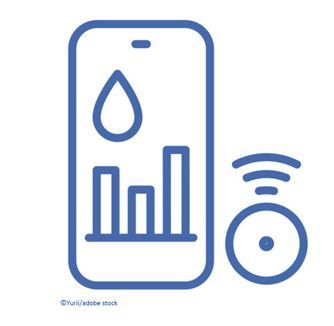- CDC
- Heart Failure
- Cardiovascular Clinical Consult
- Adult Immunization
- Hepatic Disease
- Rare Disorders
- Pediatric Immunization
- Implementing The Topcon Ocular Telehealth Platform
- Weight Management
- Monkeypox
- Guidelines
- Men's Health
- Psychiatry
- Allergy
- Nutrition
- Women's Health
- Cardiology
- Substance Use
- Pediatrics
- Kidney Disease
- Genetics
- Complimentary & Alternative Medicine
- Dermatology
- Endocrinology
- Oral Medicine
- Otorhinolaryngologic Diseases
- Pain
- Gastrointestinal Disorders
- Geriatrics
- Infection
- Musculoskeletal Disorders
- Obesity
- Rheumatology
- Technology
- Cancer
- Nephrology
- Anemia
- Neurology
- Pulmonology
Real-World Studies Show Significant HbA1c Reductions with GLP-1 RA and Freestyle Libre CGM Used Together
One study showed a significant 1.5% decrease in HbA1c 6 months after participants taking a GLP-1 RA started using the Freestyle Libre system.
©yurri/stock.adobe.com

Individuals with type 2 diabetes (T2D) who paired glucose-like peptide-1 receptor agonist (GLP-1 RA) pharmacotherapy with use of continuous glucose monitoring (CGM) technology saw a significant reduction in HbA1c 6 months after initiating use of the CGM, according to new research.
Findings from a companion study showed that adults with T2D who used a GLP-1 RA and a CGM together realized greater reductions in HbA1C than a matched group who took a GLP-1 RA but did not use the technology.
Data from the 2 real-world studies were reported at the 17th International Conference on Advanced Technologies & Treatments for Diabetes (ATTD) held in Florence, Italy, on March 6-9, 2024.
The study results, presented by Abbott, showed that the reduced blood glucose levels observed when study participants used the company’s FreeStyle Libre CGM technology were independent of the specific GLP-1 RA used, length of treatment with the drug, or whether a participant was also treated with insulin.
Data from the first study showed specifically that GLP-1 RA-treated participants with T2D and an HbA1c of 8% or greater saw a significant 1.5% reduction in HbA1C following 6 months of FreeStyle Libre use.
In the second study, reductions in HbA1c were greater for participants who used GLP-1 RA therapy and FreeStyle Libre technology together (-2.4%) than for those who used the pharmacotherapy alone (-1.7%).
Data from the first study showed specifically that GLP-1 RA-treated participants with T2D and an HbA1c of 8% or greater saw a significant 1.5% reduction in HbA1C following 6 months of FreeStyle Libre use.
"This type of complementary relationship is not uncommon in diabetes care treatment. Similar to pairing with insulin therapy, FreeStyle Libre technology is a beneficial companion to GLP-1 therapy, providing the real-time data that people with diabetes can use to make positive behavior changes and navigate their GLP-1 usage safely," Mahmood Kazemi, MD, chief medical officer for Abbott's diabetes care business said in a company news release.
"GLP-1 medicines can be very effective in lowering HbA1C for people with Type 2 diabetes who require intensified treatment," said Eden Miller, DO, diabetologist and obesity medicine fellow at Diabetes and Obesity Care in Bend, Oregon. "While treating my patients, I've observed that when we've added a CGM...to their GLP-1 therapy, we see even better glycemic control.” Miller said the combination is at least worth considering for people who manage the daily complexity of living with T2D.
The real-world studies
Both studies tapped deidentified data from the Optum database of electronic health records (EHR)-claims for US adults with T2D and elevated HbA1C (≥8%) who began first treatment with a GLP-1 RA and first acquired a FreeStyle Libre system between 2018 and 2022. In both studies, investigators compared paired change in HbA1c between the matched groups of participants at 6 months.
The first study cohort included 1781 adults with T2D and a mean baseline HbA1C of 9.8±1.5%. Mean age was 55 years, half the cohort were men (52%), 38% were treated with bolus insulin therapy, and the mean time from GLP-1 initiation to FreeStyle Libre was 499 days.
In the second study, the GLP-1 RA plus FreeStyle Libre group participants acquired their first FreeStyle Libre sensor within ±30 days of their first use of a GLP-1 RA.
Investigators matched cohorts on baseline insulin therapy, age, sex, baseline HbA1c and GLP-1 RA type. The much larger study included 24 246 adults in the GLP-1 RA only group (age 58±12 years, 51% men) and 478 adults in the GLP-1 and FreeStyle Libre group (age 54±11 years, 58% men).
